Thunderbolt on Windows Part 2: Intel's DZ77RE-K75 & ASUS' P8Z77-V Premium
by Anand Lal Shimpi on June 3, 2012 2:08 AM EST- Posted in
- Motherboards
- CPUs
- Intel
- Asus
- Thunderbolt
- Ivy Bridge
- Chipsets
Quad-core mobile Sandy Bridge, 2.5" SSDs and Thunderbolt together have allowed me to use a notebook as my primary work machine. I get all of the portability benefits of a notebook, but with almost none of the performance sacrifices. The only thing I'm really missing is a good, external discrete GPU solution but that's a problem being worked on either via Thunderbolt link aggregation or the second revision of the Thunderbolt spec.

Despite what it's done for me, Thunderbolt has to be one of the most strangely handled interface specs of recent history. Intel engineered the spec, but Apple helped with a lot of the connector and cable design and as a result received a year long exclusive on Thunderbolt. Since its introduction, Thunderbolt has received a reasonable amount of support on the Mac platform. Apple even builds a display designed exclusively for use with Thunderbolt equipped Macs. Companies like Promise, Seagate, Western Digital, LaCie and Elgato are all shipping Mac compatible Thunderbolt devices as well.
With the exclusivity agreement over, Intel's partners in the Windows PC space are allowed to ship Thunderbolt enabled motherboards and systems. Making things even more bizarre is the fact that all Thunderbolt devices have to go through Intel's certification program if they are to be approved for use under Windows. Technically only Promise's Pegasus is certified (or about to be certified) for use under Windows, despite the fact that all of these Thunderbolt devices have been available for use under Windows via Boot Camp on Macs.
The complications extend even further when you realize that Apple's own products aren't certified for use under Windows. The Thunderbolt Display is only officially supported under OS X and I don't see Apple being incredibly motivated to work on Windows certification for it. Interfaces like USB are great because you can generally count on anything that physically fits in the port just working. With Thunderbolt on Windows we now have a situation where you can't assume the same.
We got the first look at a Thunderbolt equipped PC motherboard with MSI's Z77A-GD80 a couple of weeks ago. The interface worked but was not without its quirks. To be totally fair however, the Thunderbolt experience under OS X isn't perfectly problem free either. It turns out that MSI sampled that motherboard prior to making it through the motherboard certification process. Since then, the motherboard has made it through cert and has an updated BIOS that should improve its behavior.
Both Intel and ASUS sent us their latest, fully certified, Thunderbolt equipped motherboards for another look at how the interface works under Windows. With motherboards available today, it's now time to take a complete look at what Thunderbolt is like outside of the Apple ecosystem.
The Motherboards
ASUS sent its P8Z77-V Premium motherboard with Thunderbolt support, while Intel sent its DZ77RE-75K Thunderbolt board. Only the ASUS board is publicly available and is priced at $450. ASUS will have a more affordable SKU with integrated Thunderbolt available in the future: the P8Z77-V Pro/Thunderbolt, which should be priced below $300. Other ASUS boards will be upgradeable to support Thunderbolt via an on-board header + add-in card.
The Intel board starts at $262 and goes as high as $278 depending on the in-box configuration (both include WiFi/BT dongles, while the $278 version comes with front panel USB 3.0 support).
Both boards branch the Thunderbolt controller off of the Z77 PCH, borrowing four PCIe 2.0 x1 lanes. Given how full featured these motherboards are, PCIe switches are employed to allow the use of all the remaining PCIe devices connected to the PCH.
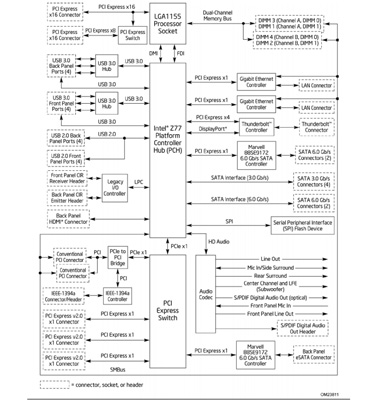
Intel's Z77 Thunderbolt Motherboard Block Diagram
ASUS goes one step further and includes a PCIe 3.0 switch to enable quad-CF/SLI support despite the limited number (16) of PCIe lanes Intel's LGA-1155 CPUs provide. ASUS' board features all the bells and whistles including a 32GB Marvell based Liteon mSATA SSD:
The Thunderbolt port on both boards can serve as either a Thunderbolt port or a DisplayPort output, similar to the behavior on a Thunderbolt Mac. Discrete GPUs are supported through the on-board Thunderbolt/DisplayPort output, provided you have Lucid's Virtu software installed.
As Thunderbolt carries more bandwidth than USB 3.0, trace routing is very important to achieving max performance. You'll notice that on all Thunderbolt boards we've tested thus far, the Cactus Ridge controller and Thunderbolt port are very close to one another. The spec for max trace length between the Thunderbolt controller and port is two inches, compared to up to 10 inches for Intel's USB 3.0 controller.
ASUS tells us that in order to reduce crosstalk it spaced Thunderbolt traces 1.5x wider than traces for USB 3.0 on its boards. Finally, all Thunderbolt traces are on the same PCB layer and don't feature any sharp angles in their route—only gradual arcs, which further improves performance. There's an impressive amount of engineering that has to go into bringing Thunderbolt support to a motherboard.
BIOS/UEFI support for Thunderbolt appears to be identical across all of the third party board makers. ASUS' Thunderbolt options look identical to MSI's for example:
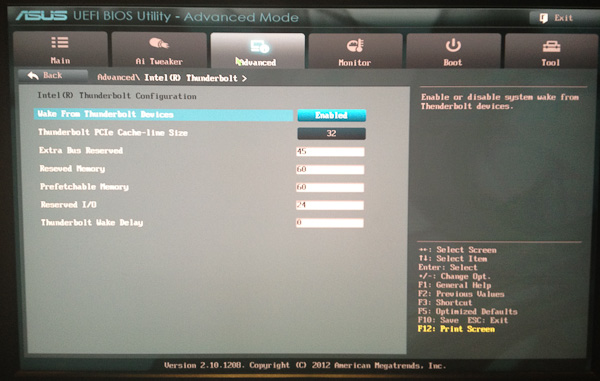
Interestingly enough, Intel doesn't actually expose any of the specific Thunderbolt settings. The Intel board just lets you enable/disable the interface itself:
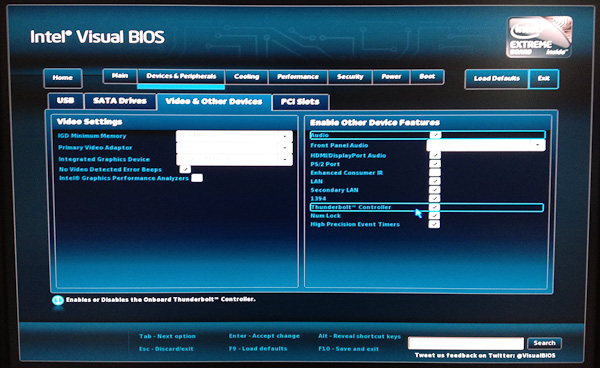


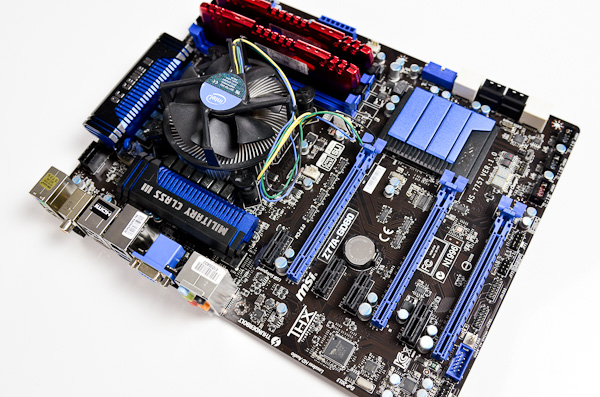
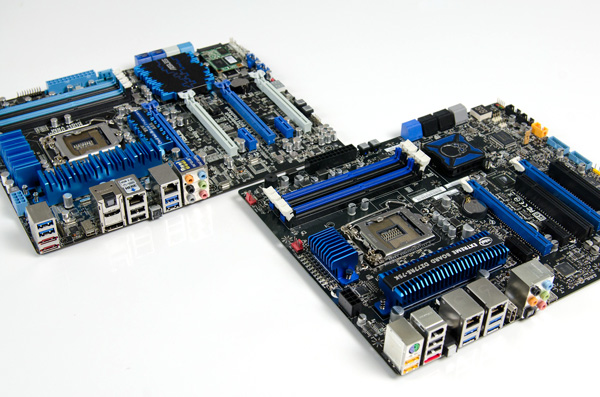

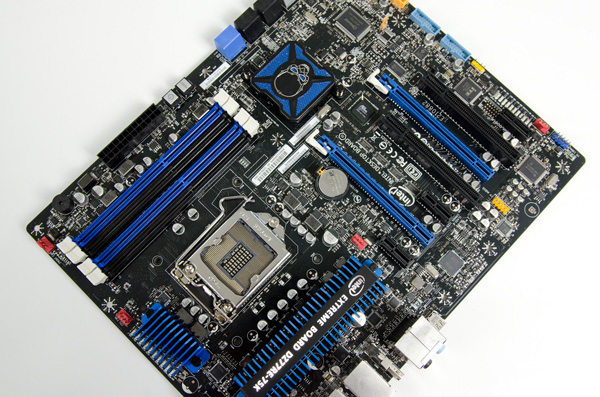
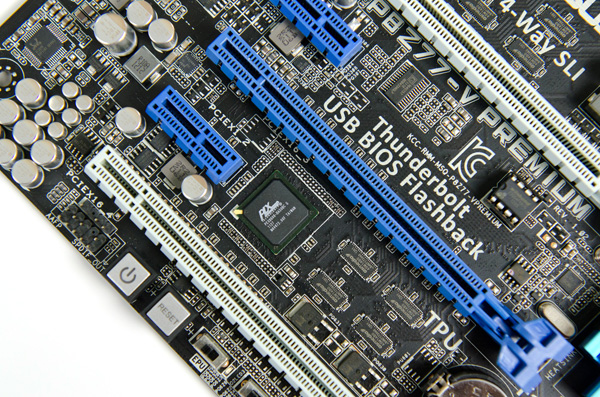
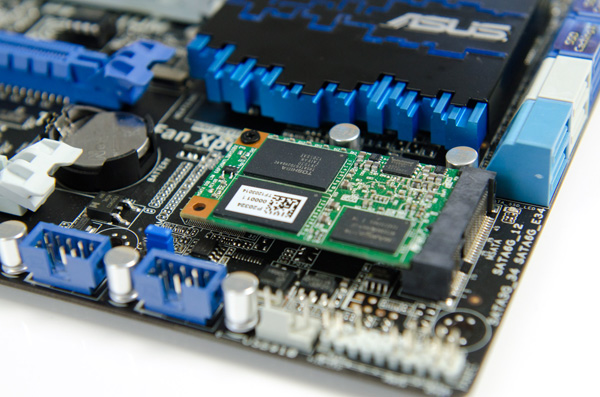
















116 Comments
View All Comments
MobiusStrip - Thursday, June 14, 2012 - link
"Great - another proprietary standard that no one can get for a full year..."WTF are you even doing on this site? Your knowledge is clearly far below that of the intended audience, so why don't you get back to your consumer-oriented sites and tout the virtues of USB to your fellow dolts?
Pneumothorax - Sunday, June 3, 2012 - link
In it's intro, the great prophet Jobs bragged about how superior TB was going to be vs. USB 3.0. Apple's pathetic 1 year exclusivity agreement plus $50 cable and Intel's high priced TB controllers are sure to doom this standard. How many FW400 ports are sitting empty on thousands of motherboards as we speak?mavere - Sunday, June 3, 2012 - link
*shrugs*Firewire found its niche in high end A/V equipment. Guess what computers those professionals tend to buy?
The fact that TB doubles as a mDP means that TB can coexist with USB just fine, and through Apple, manufacturers are also guaranteed a steady and growing base of affluent costumers. That assures at least some high-end devices for those who require that much throughput.
If you or I need to consistently move files at almost 1 gigabyte/sec, we can now easily do so. The world is improved; progress is achieved; vitriol is unneeded.
ananduser - Sunday, June 3, 2012 - link
Pneumothorax was being realistic. TB could've been managed better and morph into a great solution. Instead it is pushed into a niche because of the whims of 2 companies. He's not berating the tech but the handling of the interface.coder543 - Sunday, June 3, 2012 - link
no, he's wrong. TB would have yielded an epic failure if it didn't have Apple pushing it along. What manufacturers would have worked so hard to get TB laptops and desktops on the market? Let alone devices like hard drives! No.. it would've been an eSATA.jleach1 - Sunday, June 3, 2012 - link
No...you're wrong. Just look at the state of Displayport.Thefinaleofseem - Sunday, June 3, 2012 - link
You mean the Displayport that's on a ton of video cards now? The very connector that is the standard for many high-end displays? You mean the interconnect that will because a whole lot more useful when we see ultra high-resolution displays hit the market, most likely this year? The kind that may easily exceed the 4K x 2K max on HDMI?Shadowmaster625 - Monday, June 4, 2012 - link
DP has been around for years and it is still rarely used. I bet less than 5% of all PCs bought in the last year use it. I know of one, and it is just a nuisance because we dont have any monitors with displayport so it goes right into a dongle. DP was a waste of engineering. In 2012, it still is. It has surely cost the industry millions in lost productivity (WTH is this stupid thing, why dont I have video? Why doesnt my monitor have this port? How do I connect it? Do I NEED to connect it? etc. It is an utter debacle.)repoman27 - Monday, June 4, 2012 - link
That's why Intel and AMD are both set to phase-out LVDS support from their product lines over the next couple years and transition to eDP? Because it was a waste of engineering? That's why NPD In-Stat predicts a 95% eDP attach rate in notebook PCs in 2015?Abut 90 million PCs shipped with DP support last year, or 25% of the global total, vs about 180 million with HDMI. Where DisplayPort needs to gain traction is in the external display market. Although the adoption rate grew by 160% last year, as long as people are happy with cheap 1920x1080 panels, the CE targeted HDMI standard is more than sufficient.
CeriseCogburn - Monday, June 4, 2012 - link
Most people cannot stand as high as 1920X1080 on their desktop panels, and far more don't have close to that on their laptops.Most people need 1280X1024 to be able to see their icons and text, maximum.
They might be down for 1366X768 no problem, but 1280X800 is much more desirable overall.
You're going to have to upgrade people's eyeballs to get anywhere.